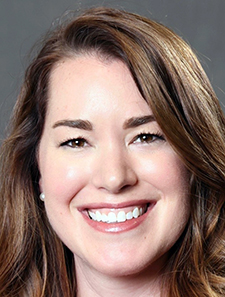Annie Massart, MD, SFHM, a hospitalist and assistant professor in the division of hospital medicine at Emory University in Atlanta, is a well-known clinician educator and is revered for her commitment to her learners’ well-being through homemade goodies and their professional success.
It was no surprise that her lecture on bedside rounds (BSR) was given to a packed room at SHM Converge 2025. Her aims for the session were to discuss the benefits of BSR for patients, identify barriers to BSR both on an individual level and system level, understand the relationship between setting expectations and getting learner buy-in, and finally, to name specific steps any educator can employ to optimize their next rounding week. To focus the lecture, Dr. Massart asked the audience to remember the great physician Sir William Osler.
Dr. Osler’s passion for teaching the practice of medicine to his students at the bedside has served as a cornerstone for physicians; however, times have changed dramatically. Dr. Osler and his students did not have a computer on wheels or a smartphone with large language model apps in their pockets, but equipped with their physical exam and history taking skills and hours of personal study of medical texts, they too successfully saw and cared for patients. Between the 1960s, when 75% of rounds took place at the bedside, and now, when less than 20% of rounds occur at the bedside, there has been a drastic shift in resident medical education. When Dr. Massart polled the audience on why they don’t BSR, a flurry of responses appeared on the screen, with the most common being time constraints, resident preference, patient complexity, efficiency, and other administrative duties during the workday. A recent study of 253 participants was presented that identified that both clinician educators and learners prefer the conference-room-only approach to rounds. Dr. Massart, an enthusiast for bedside education, then went on to dig deeper for the “why” behind the fear of BSR.
As the study identified, both learners and attendings share the concern that BSR will take too much time, with each thinking the other doesn’t want to partake in it. She presented a few studies that looked at endpoints of duration of time spent on ward rounds versus bedside discussion when it occurred exclusively at the bedside versus outside the room. Results identified that the bedside group spent more time physically at the bedside but less time on each patient encounter compared to hallway discussants, who discussed first, then went into the room to talk with the patient. The next study she shared demonstrated the same findings and also showed that the medicine residents who performed BSR felt closer to their patients and expressed interest in making BSR the standard of care.
When considering the benefit to patients, they have a perception that more time was spent on them, and they perceived the clinician spent more time in their day facilitating their care. Patients also remarked on increased compassion from the care team and preferred BSR. There are also educational benefits for learners through direct observation as they can gain real-time, specific, and actionable feedback on their interview and physical exam skills, along with professionalism. The other benefit to the learner is observation of the modeled behavior of their attending and how they interact with patients, nurses, and consultants. For attendings concerned about their resident evaluations for promotion, studies support that there is no difference in evaluations between those who did and those who did not perform bedside rounds when graded on granted autonomy, professionalism, time management, or teaching ability.
Faculty development is a passion of Dr. Massart’s, and she encouraged attendings in the audience to use their peers as examples to learn from and search for evidence-based textbooks on physical examination to help guide teaching. She shared a framework with the audience to improve efficiency using the MiPLAN tool.
Determine where you will meet and set expectations, next introductions, in-the-moment listening, physical exam inspection, avoiding interruptions, and allowing space for independent thought to emerge. Finally, decide on a plan for the patient, answering questions and identifying next steps that align with the whole team. Using this guide for rounds may be a benefit to you and your team the next time you’re on service.
Consider reviewing the key takeaways and even trying this with your teams. You may unlock a new level of enjoyment in your clinical practice and inspire your junior learners by your example. You can be a positive ripple of change for patients, care staff, your team, and your medicine department. Be the change!
 Dr. Spaeth is a second-year internal medicine resident at OhioHealth Riverside Methodist Hospital in Columbus, Ohio.
Dr. Spaeth is a second-year internal medicine resident at OhioHealth Riverside Methodist Hospital in Columbus, Ohio.